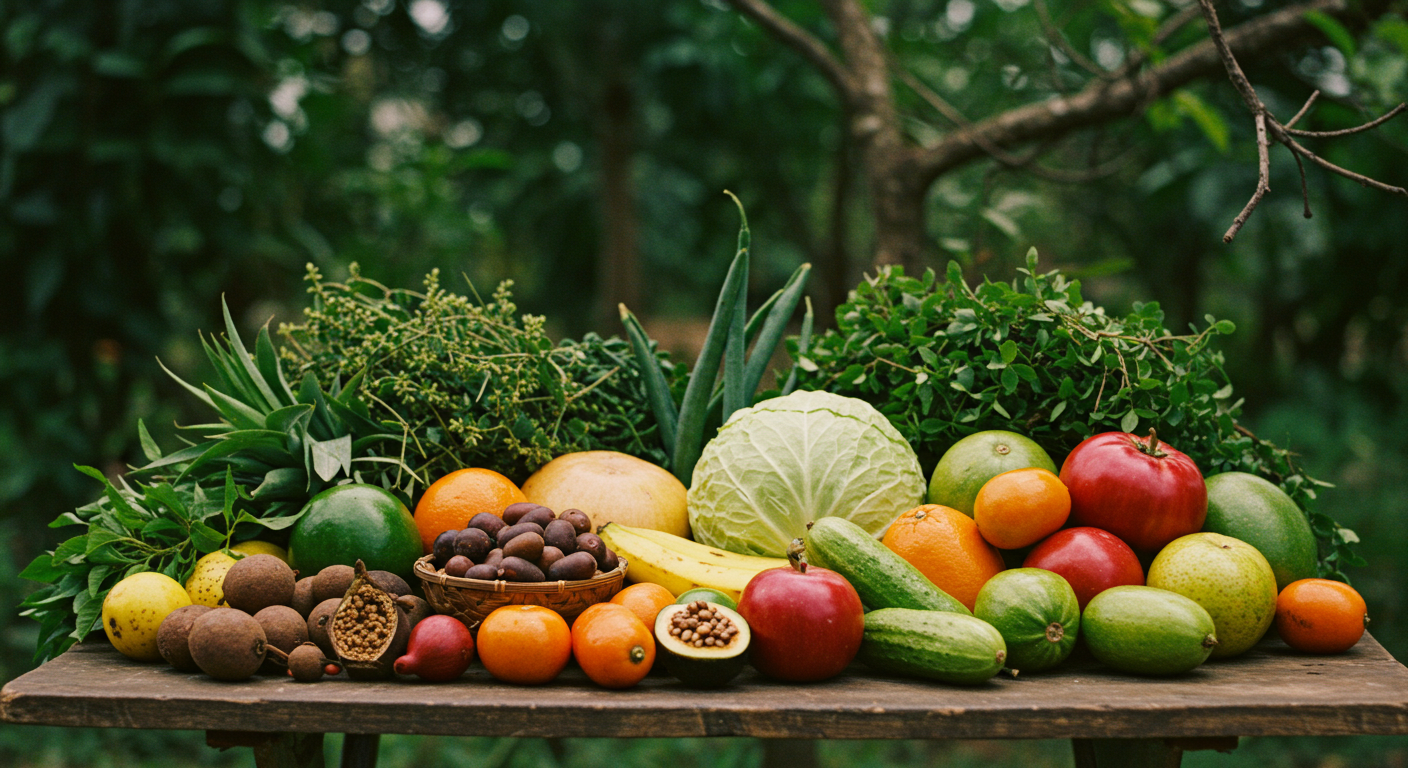Eating seasonally is a traditional African practice rooted in local agricultural cycles. Seasonal eating ensures that foods are consumed at their peak freshness and nutrition, while also supporting local farmers and biodiversity.
In West Africa, fruits like mangoes, pineapples, and oranges flourish between March and July. This is the perfect time for fresh juices and fruit-based sauces. Leafy greens such as amaranth (called tete in Nigeria) and ugu (fluted pumpkin) also thrive in the rainy season, from April to October.
In East Africa, passion fruits, avocados, and bananas are abundant year-round, but crops like maize and beans have peak seasons between May and September. Seasonal vegetables such as sukuma wiki (collard greens) are best enjoyed in the cooler months.
In Southern Africa, butternut squash, sweet potatoes, and maize are staples during the dry season. Baobab fruit, available from May to October, is a superfood rich in vitamin C and calcium.
Following a local produce calendar helps diversify your diet and encourages sustainable eating. Whether you're making yam porridge in Nigeria or maize-based dishes in Kenya, eating with the seasons is a delicious way to honor nature’s rhythm.
// Amazon affiliate shopping cart script (function () { const affiliateTag = "your-affiliate-tag"; // Replace with your actual Amazon affiliate tag const items = [ { asin: "B08N5WRWNW", quantity: 1 }, { asin: "B07FZ8S74R", quantity: 1 }, { asin: "B089KV4YYX", quantity: 1 }, { asin: "B08J5F3G18", quantity: 1 } ]; function createAmazonCartLink() { let cartUrl = "https://www.amazon.com/gp/aws/cart/add.html?"; cartUrl += `AssociateTag=${affiliateTag}`; items.forEach((item, index) => { cartUrl += `&ASIN.${index + 1}=${item.asin}&Quantity.${index + 1}=${item.quantity}`; }); return cartUrl; } function createCartButton() { const button = document.createElement("button"); button.innerText = "Add to Amazon Cart"; button.style.padding = "10px 20px"; button.style.fontSize = "16px"; button.style.backgroundColor = "#ff9900"; button.style.color = "#ffffff"; button.style.border = "none"; button.style.cursor = "pointer"; button.style.borderRadius = "5px"; button.onclick = function () { window.location.href = createAmazonCartLink(); }; document.body.appendChild(button); } document.addEventListener("DOMContentLoaded", createCartButton); })();


